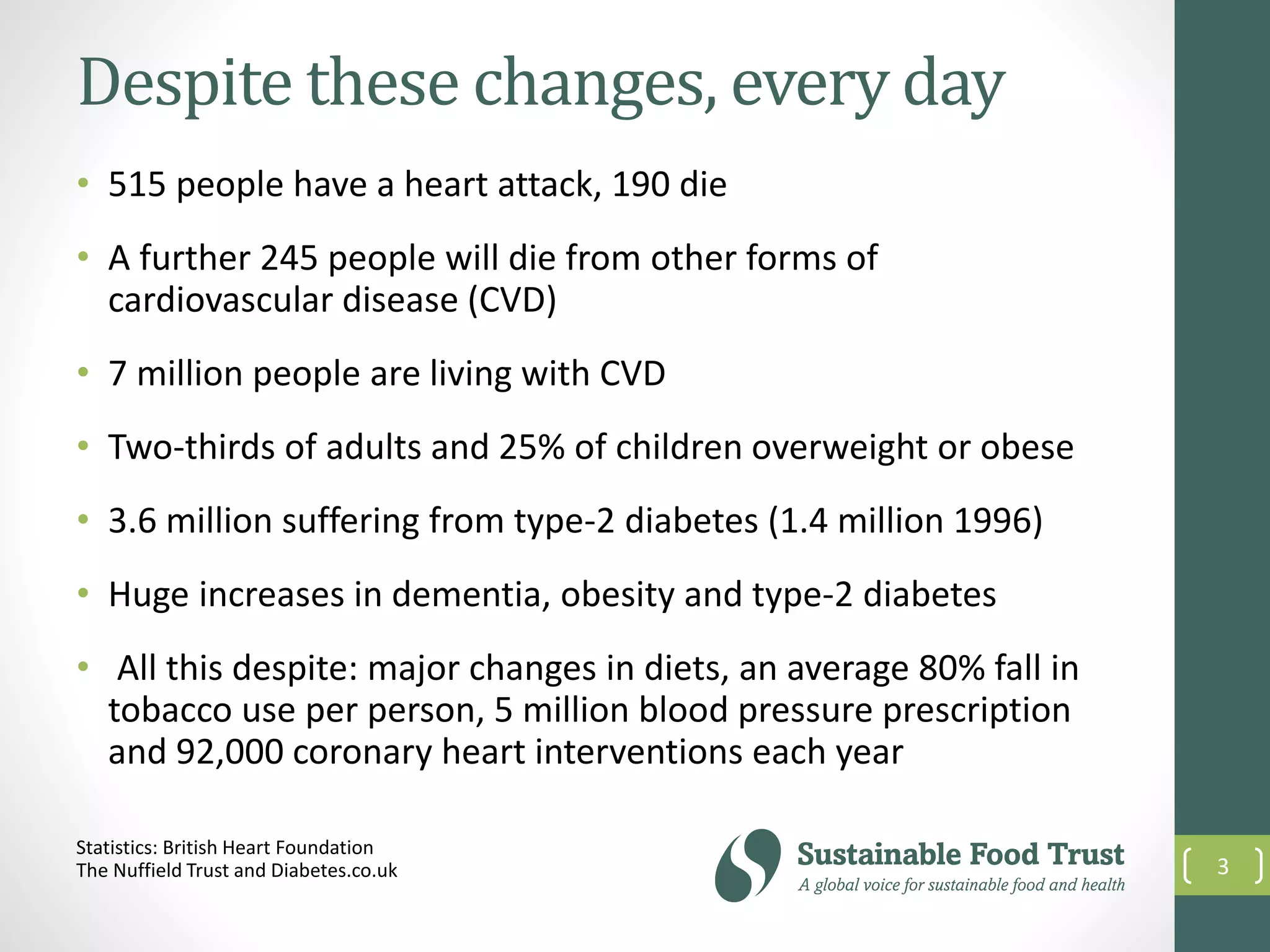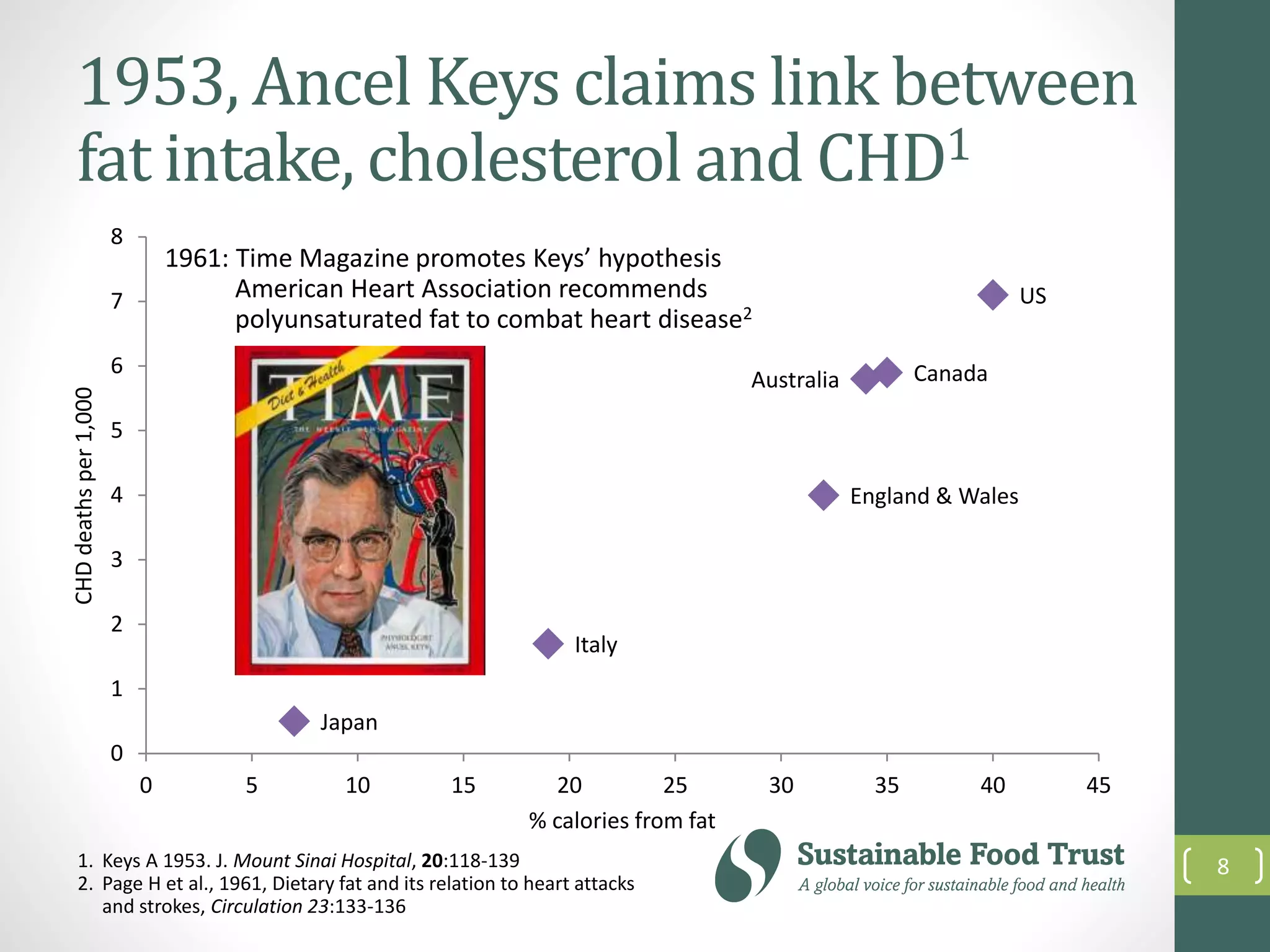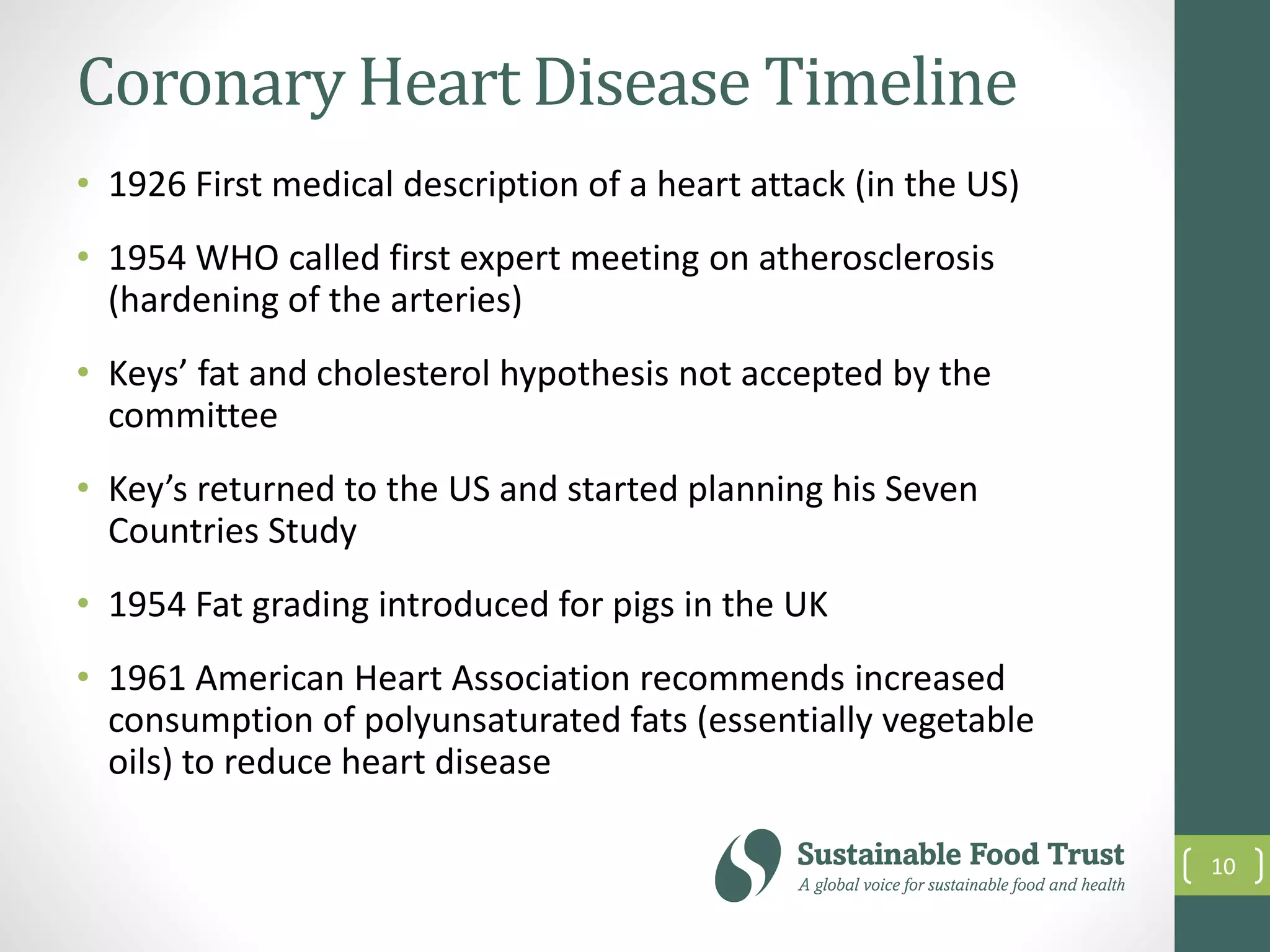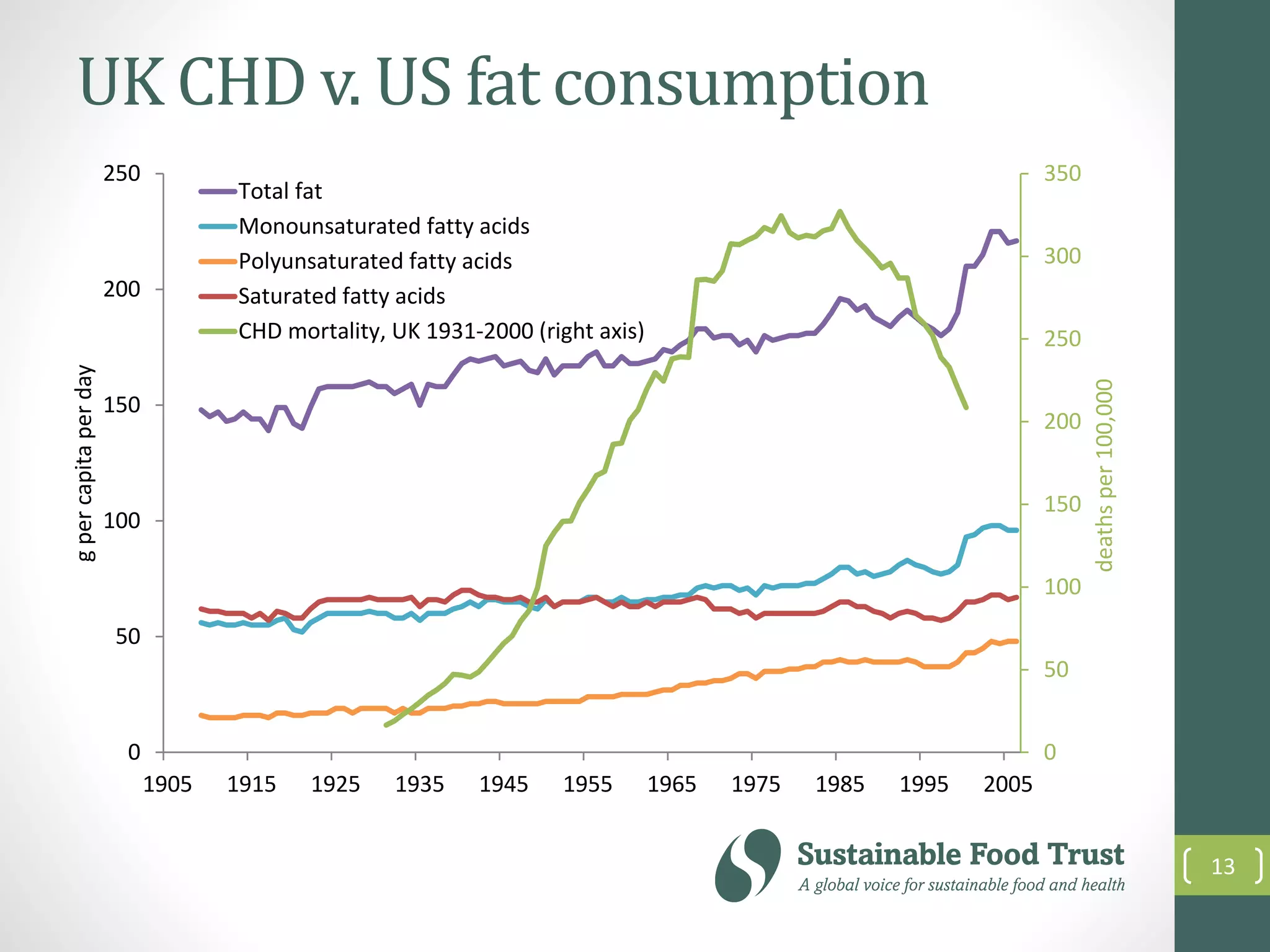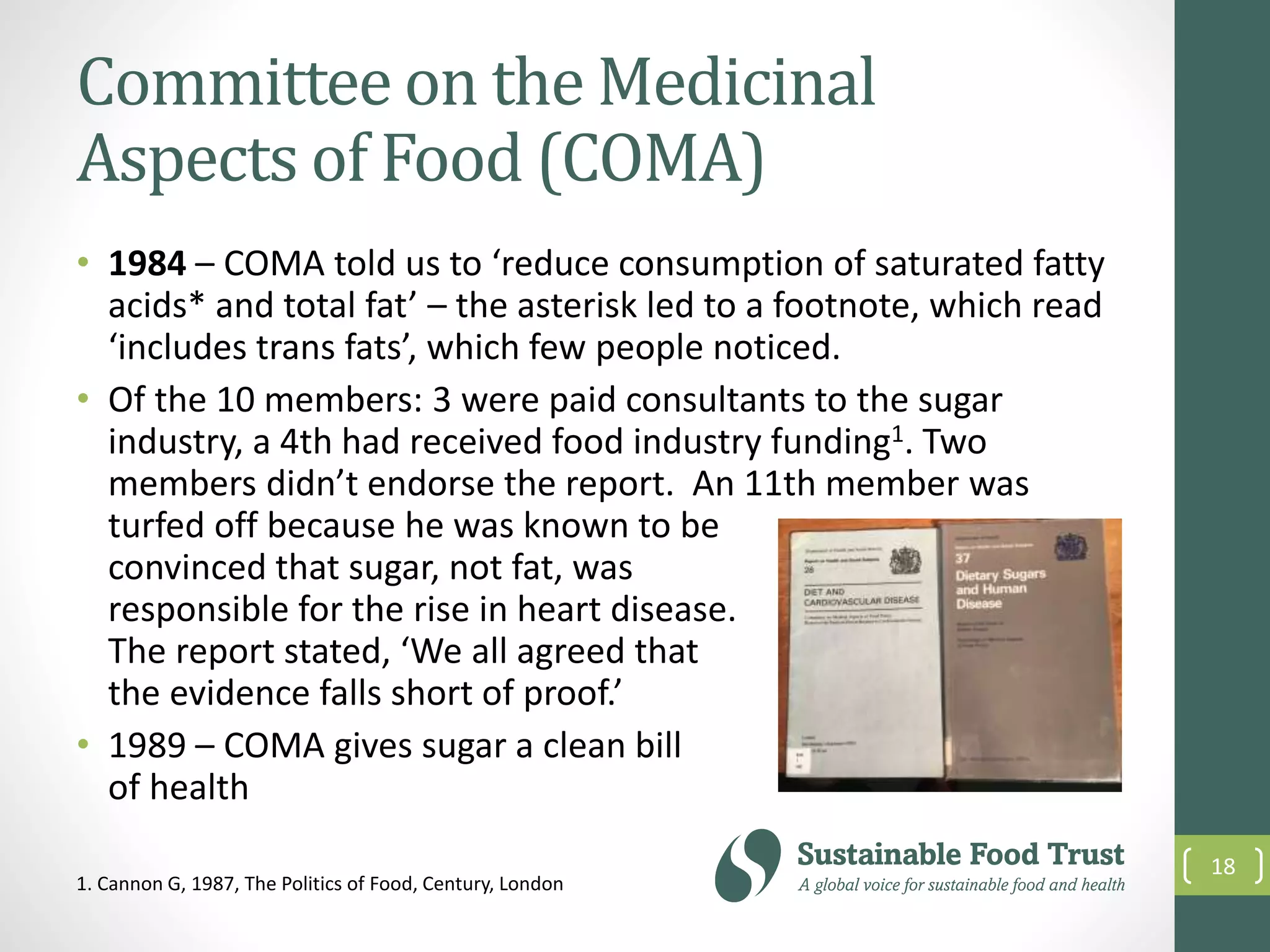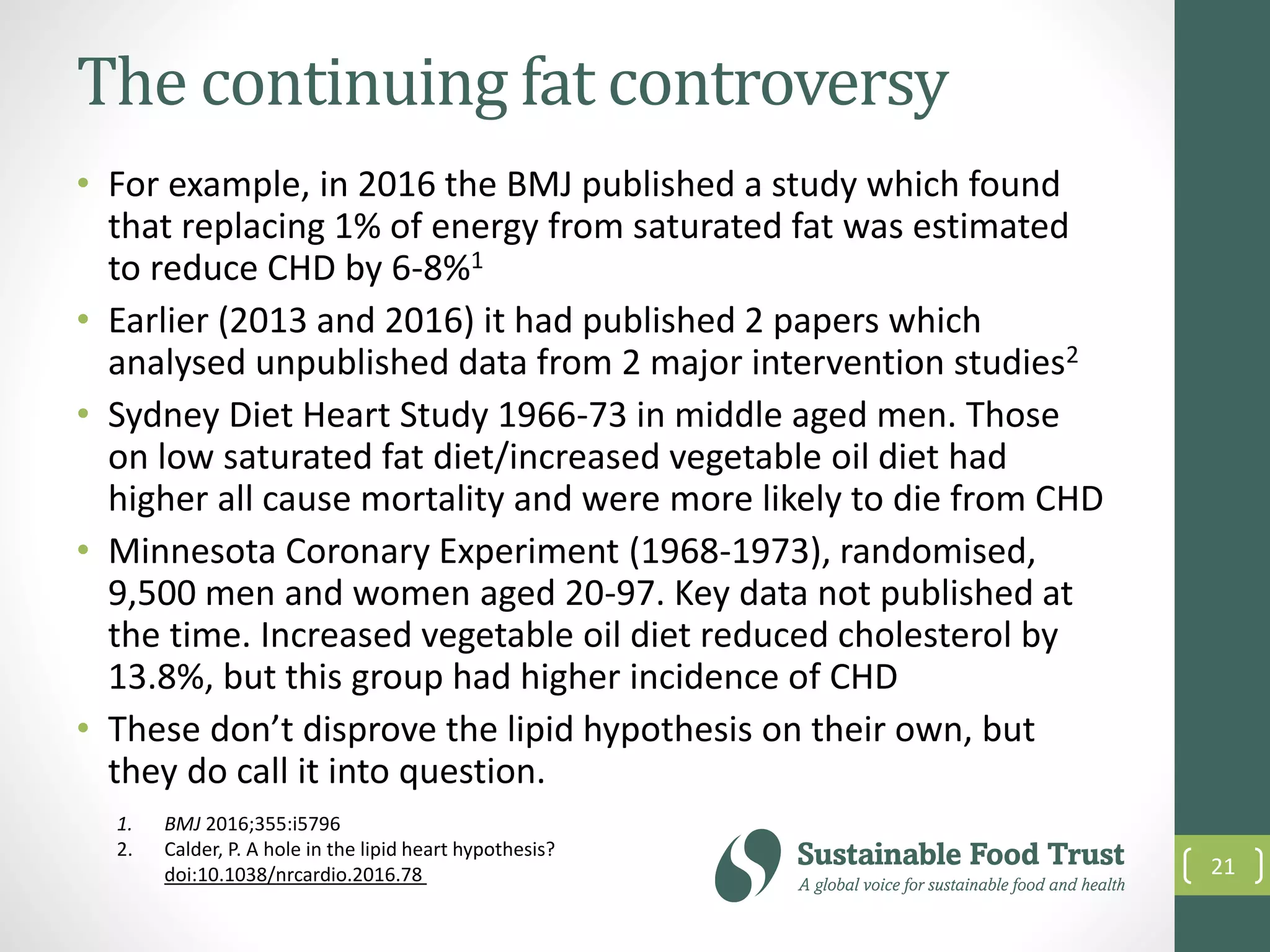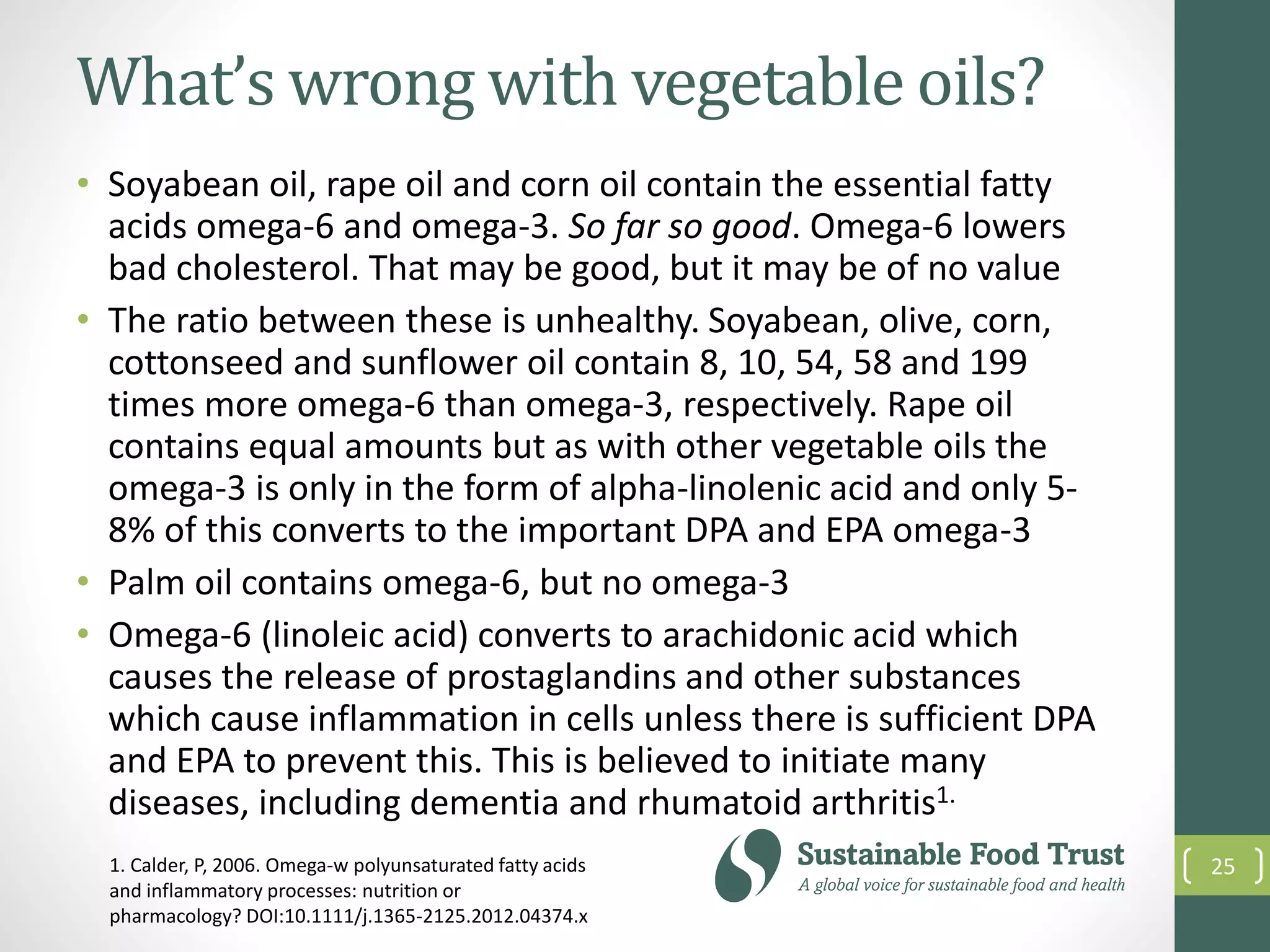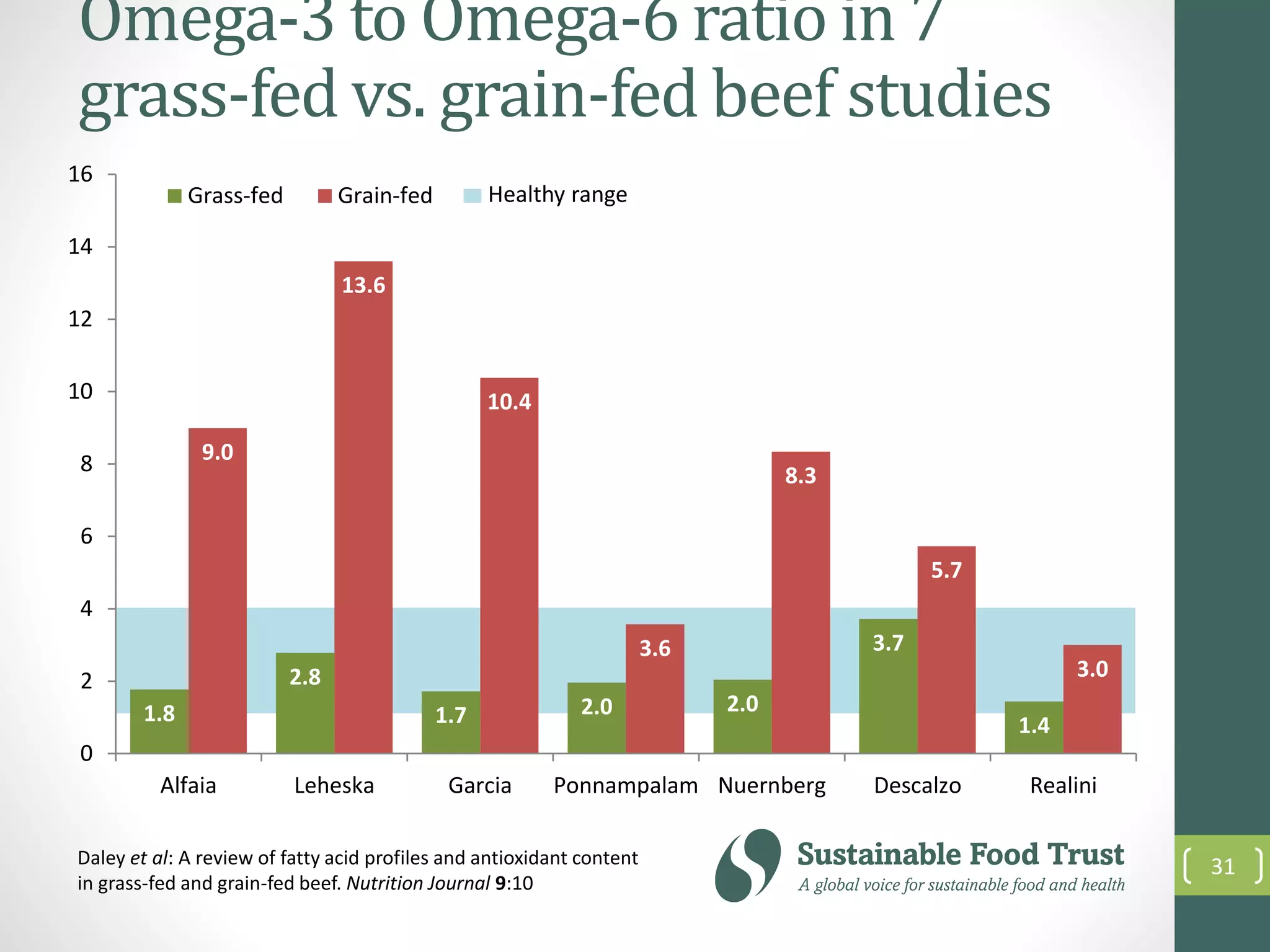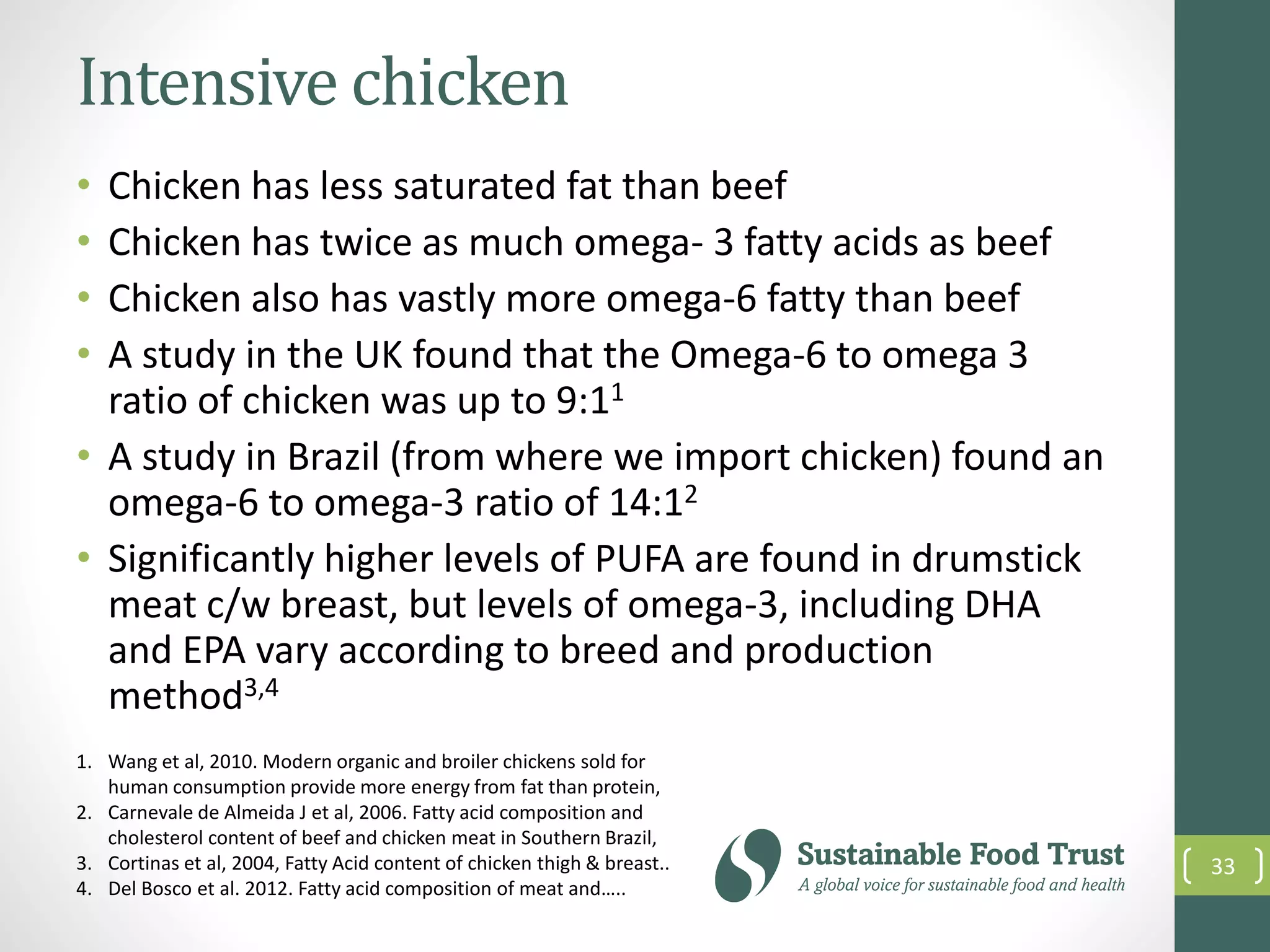This document discusses the history of dietary recommendations to reduce saturated fat and consume more vegetable oils. It notes that in the early 20th century, consumers were encouraged to switch from animal fats to vegetable oils and saturated to polyunsaturated fats. However, despite these dietary changes, rates of heart disease, obesity and diabetes have increased. The document questions whether vegetable oils are better for health or the environment than animal fats. It summarizes the evidence that linked saturated fat to heart disease and promoted vegetable oils may have been influenced by the sugar industry.


